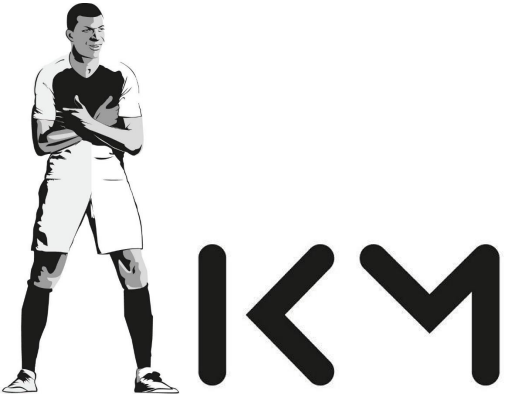French football superstar Kylian Mbappé celebrates most of his goals by crossing his arms and tucking his hands underneath his armpits. It has become one of the most iconic goal celebrations in the world. Mbappé, who is due to move to Spanish team Real Madrid at the end of this season, has already taken steps to register a logo depicting his celebration as a trademark in several countries, as well as in the European Union. He has done the same for his surname, initials and most famous quotes. The black-and-white logo depicts a smiling Mbappé, celebrating in his usual fashion.
Mbappé is not the only famous athlete who has looked to secure exclusive rights to their signature celebration. In 2022, for example, Jamaican sprinter Usain Bolt filed an application to register the logo showing his victory celebration pose. That application is still pending before the U.S. Patent and Trademark Office.

The reason well-known athletes look to amass rights in (and registrations for) their signature poses, and other aspects of their image, is obvious. They wish to turn them into successful brands that can be used commercially in a wide range of markets. Among the products covered by Mbappé’s applications for registration are clothes, textiles, footwear, toys, video games, umbrellas, bags, jewelry, perfumery, cosmetics, and toothpastes. Any brands that wish to use Mbappé’s logo, name, or quotes in a source-indicting capacity will generally need authorization to do so.
But how can the celebratory pose of a sporting star become a brand? To answer this question, we need to look at the nature and function of trademarks.
What trademark law says
A trademark is used in trade to distinguish the goods and services of a company from its competitors. As such, the key function of a trademark (but not its only function) is to indicate the commercial origin of a product or service. Logos representing a famous athlete’s iconic pose very well may satisfy this requirement. Such postures, for instance, might create a stronger association between the player and the products to which his/her image is affixed, offering a more distinctive characterization compared with a traditional portrait-style image. And thus, this type of branding may allow consumers to distinguish the products sold and/or otherwise endorsed by the player from the goods sold by others, effectively functioning as an indication of commercial source.
For example, if we see a toy, blanket, birthday card, or poster in a store that features Mbappé’s trademark-protected celebration logo (or any other trademarks incorporating his image, name, and initials), we will probably think those products are marketed by Mbappé himself. So, if a business sells such branded goods without his authorization, that use would likely be infringing because consumers erroneously believe that the goods are official Mbappé merchandise.
Mbappé is a sports icon with hundreds of millions of fans and followers, including 112 million on Instagram, which means that his trademarks may soon become very-well-known to a large range of consumers, especially if he ramps up the manufacture, sale, and promotion of a variety of products bearing his brand. Owners of famous brands have a higher chance of prevailing in trademark infringement cases. It would then be enough for Mbappé to show that a business that has sold products incorporating his pose is aiming to take unfair advantage of the reputation of such a trademark. The same outcome would materialize if he could show that such a product is detrimental to his brand – for example, if the replica product bearing his brand is of poor quality.
Other celebrities have done the same. In 2016, Australian popstar Kylie Minogue initiated a trademark battle in the U.S. with television personality Kylie Jenner over her quest to register their shared first name. In since-settled proceedings before the U.S. Patent and Trademark’s Trial and Appeal Board, Minogue argued that her Kylie brand (and corresponding trademarks) would be tarnished if Jenner were allowed to register an identical or similar trademark, describing her as a “secondary reality TV personality.”
Protecting free speech
In theory, there are also downsides to a broad trademark protection strategy based on the registration of every aspect of an athlete’s image and personality. Such an approach could limit the freedom of the public – and especially sports fans – to celebrate or criticize their icons. Take, for instance, a website dedicated to Mbappé that serves as a forum where fans can exchange opinions about the player’s sporting performance and marketing activities. One could imagine that the website’s homepage features Mbappé’s trademark-protected pose, his name, and/or a famous quote prominently, and hosts fan commentaries that are highly critical of any of his activities.
Mbappé could, in theory, enforce his trademark rights against the website host in order to stop what he may consider a use of his trademark that tarnishes or even takes advantage of its reputation. Such a hypothetical cause of action would be even more applicable if the website displays advertising banners and sponsored sections, as Mbappé could claim that his brands are being exploited commercially.
The potential problem would be that such an enforcement would unduly restrict the right of football fans to free speech. It would also unjustifiably allow trademark owners to stop their brands being used for purposes that are not strictly commercial. We should all be entitled to celebrate or criticize our favorite players by posting commentaries about their behavior on and off the pitch and including their iconic pose.
Mbappé’s trademark protection strategy is certainly legitimate and in line with the current branding trends of most celebrities. But the French football star (and other famous figures) is advised not to enforce his trademarks against whoever simply expresses opinions and ideas about him without a strict economic purpose. The risk is not only to lose the legal case, but also alienate fans who may end up disappointed about their idol’s willingness to be overly litigious.
Enrico Bonadio is a Reader in Intellectual Property Law at City, University of London.
Andrea Zappalaglio is a Lecturer in Intellectual Property Law at the University of Sheffield.











